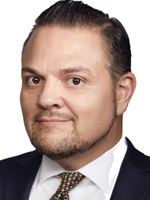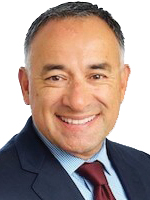Is it med-mal or is it premises liability?
A fall in the hospital? Where does med-mal end and premises liability begin?
You get a call from a potential client who had a bad fall while a patient at a medical facility. I know what you are thinking — not another med-mal case I really don’t want. But wait, let’s take a deeper look at this potential case. Ask the potential new client about the facts surrounding the fall. If they told you they fell walking down the hall of the hospital in a common area where patients and the public are allowed, would that change your analysis? Well it should! What is considered Medical Malpractice/Professional Negligence is codified under Code of Civil Procedure section 364:
(a) No action based upon the health care provider’s professional negligence may be commenced unless the defendant has been given at least 90 days’ prior notice of the intention to commence the action.
(b) No particular form of notice is required, but it shall notify the defendant of the legal basis of the claim and the type of loss sustained, including with specificity the nature of the injuries suffered.
(c) The notice may be served in the manner prescribed in Chapter 5 (commencing with Section 1010) of Title 14 of Part 2.
(d) If the notice is served within 90 days of the expiration of the applicable statute of limitations, the time for the commencement of the action shall be extended 90 days from the service of the notice.
(e) The provisions of this section shall not be applicable with respect to any defendant whose name is unknown to the plaintiff at the time of filing the complaint and who is identified therein by a fictitious name, as provided in Section 474.
(f) For the purposes of this section:
(1) “Health care provider” means any person licensed or certified pursuant to Division 2 (commencing with Section 500) of the Business and Professions Code, or licensed pursuant to the Osteopathic Initiative Act, or the Chiropractic Initiative Act, or licensed pursuant to Chapter 2.5 (commencing with Section 1440) of Division 2 of the Health and Safety Code; and any clinic, health dispensary, or health facility, licensed pursuant to Division 2 (commencing with Section 1200) of the Health and Safety Code. “Health care provider” includes the legal representatives of a health care provider;
(2) “Professional negligence” means negligent act or omission to act by a health care provider in the rendering of professional services, which act or omission is the proximate cause of a personal injury or wrongful death, provided that such services are within the scope of services for which the provider is licensed and which are not within any restriction imposed by the licensing agency or licensed hospital.
The exact circumstances of injury
So how does this relate to our slip and fall? The exact circumstances of the injury-causing event make all the difference in the applicable law. Fortunately, we do have some guidance from the California courts on this very issue.
In Gopaul v. Herrick Memorial Hosp. (1974) 38 Cal.App.3d 1002, a patient suffering from pneumonia was taken on a gurney for X-rays. After the X-rays were taken, the patient was left unattended; she developed a fit of coughing and fell to the floor, allegedly injuring her spine. The court began its analysis by noting that not every act of negligence by a professional is an act of professional negligence, even where the victim is a client: “No reasonable person would suggest that ‘professional malpractice’ was the cause of injury to a patient from a collapsing chair in a doctor’s office or to a hospital patient from a chandelier falling onto his bed.” (Id., 38 Cal.App.3d at p. 1006.)
In Murillo v. Good Samaritan (1979) 99 Cal.App.3d 50, the court rationalized the decision in Gopaul to develop a test for determining whether ordinary rather than professional negligence was involved. There the court reasoned that “The test reasonably must be whether the negligence occurred within the scope of the ‘skill, prudence, and diligence commonly exercised by practitioners of his profession.” (Ibid.) If a doctor doesn’t sew up a wound correctly, that’s professional negligence, but if the doctor fails to maintain his waiting room and a patient falls on spilled coffee, that is premises liability.
The Murillo court also concluded that the result reached in Gopaul was not incompatible with the definition of professional negligence later codified in Code of Civil Procedure section 340.5. Under that definition, the test is not whether the situation calls for a high or a low level of skill, or whether a high or low level of skill was actually employed, but rather, the test is whether the negligent act occurred in the rendering of services for which the health care provider is licensed.
In Flores v. Presbyterian Intercommunity Hosp. (2016) 63 Cal.4th 75, 86, the Supreme Court rejected the notion that MICRA’s one-year statute of limitation should “apply to a visitor action for injuries resulting from a custodian’s negligence in leaving a broom on a hallway floor, or a doctor’s action against the hospital for failure to place a warning sign on a wet, recently mopped floor.” (Id. at 86.) Moreover, the Court sated its ruling was not contrary to the intent of the legislature, or Code of Civil Procedure section 340.5 (the one-year MICRA statute.)
The Flores court made sure to clarify that Code of Civil Procedure section 340.5 was not intended to become “an all-purpose rule covering essentially every form of ordinary negligence that happens to occur on hospital property.” (Id. at 86.. The Court stated that it had to “draw the distinction between professional obligations of hospitals in the rendering of medical care to their patients and the obligations hospitals have, simply by virtue of operating facilities open to the public, to maintain their premises in a manner that preserves the well-being and safety of all users.” (Id. at 87.)
Johnson v. Open Door Community Health Centers (2017) 15 Cal.App.5th 153
A pivotal case to consider in a premises-negligence case against a medical facility is Johnson v. Open Door Community Health Centers (2017) 15 Cal.App.5th 153. There, the Court of Appeal discussed the application of Flores to a trip-and-fall case. Unlike plaintiff Flores, who was injured during the provision of medical care, through the breach of a duty owed only to patients, Johnson was injured after her care was completed when she tripped on a scale coincidentally used as part of her earlier medical treatment. The Johnson court pointed out that the plaintiff did not allege that failure to properly maintain the scale she was weighed on affected the quality of her medical treatment. In fact, the plaintiff in Johnson was weighed without incident. The Johnson court did state that “had she alleged the improper placement of the scale caused her to fall off the scale and injure herself, MICRA might apply.” And that “had she alleged that the medical facility’s failure to properly calibrate the scale resulted in inaccurate information and inappropriate medical care, any resulting claim would almost certainly be subject to MICRA.”
It was important in Johnson that the pleading by Johnson’s attorneys alleged that placement of the scale “posed a tripping hazard,” implicating a duty to all users of its facility, including patients, employees, and other invitees, to maintain safe premises. (Flores, supra, 63 Cal.4th at pp. 87-88.) Under the circumstances, the nature of the object did not matter, because the scale could just as easily have been a broom or a box or medical supplies; what is material is that the duty owed by the healthcare provider was not exclusively owed to patients. (Flores, supra, 63 Cal.4th at p. 86). The Johnson trip-and-fall case set precedent as being closely analogous to the Flores case, which dealt with a “collapsing chair,” because the failure to maintain a waiting-room chair threatens harm to all visitors, not just patients, and therefore constitutes ordinary, not professional negligence. (Id. at p. 89).
Seems pretty simple, right? But even under the scenario with our potential new client you will invariably run into defense counsel who with a straight face will tell you “this is med-mal” and “you blew the one-year statute” when you file this type of case as an ordinary negligence/premises case.
Why does it really matter whether the case is handled under Code of Civil Procedure section 364 (Professional Negligence) or under common law premises/negligence? This article is not intended as a primer on professional negligence, but there are three major reasons it makes such a huge difference:
MICRA
Medical malpractice in California has long been hampered by our old friend the MICRA cap. On any case with significant injuries to be constrained by the $250,000 general damage cap imposed by MICRA makes cases like these difficult to pursue. Just the mention of the word MICRA usually makes plaintiff lawyers run.
CACI instructions
Professional negligence has its own set of CACI instructions that make the burden of proof much higher as opposed to the burden on a regular premises case. For example, take a look at this wonderful CACI instruction:
CACI 505 Success Not Required
A doctor is not necessarily negligent just because his/her efforts are unsuccessful or he/she makes an error that was reasonable under the circumstances. A doctor is negligent only if he/she was not as skillful, knowledgeable, or careful as other reasonable practitioners would have been in similar circumstances.
Wow, how do you med-mal lawyers win these cases? Hats off to the med-mal warriors out there.
Statute of limitations
California’s statute of limitations for medical malpractice lawsuits can be found at Code of Civil Procedure section 340.5:
In an action for injury or death against a health care provider based upon such person’s alleged professional negligence, the time for the commencement of action shall be three years after the date of injury or one year after the plaintiff discovers, or through the use of reasonable diligence should have discovered, the injury, whichever occurs first. In no event shall the time for commencement of legal action exceed three years unless tolled for any of the following: (1) upon proof of fraud, (2) intentional concealment, or (3) the presence of a foreign body, which has no therapeutic or diagnostic purpose or effect, in the person of the injured person. Actions by a minor shall be commenced within three years from the date of the alleged wrongful act except that actions by a minor under the full age of six years shall be commenced within three years or prior to his eighth birthday whichever provides a longer period. Such time limitation shall be tolled for minors for any period during which parent or guardian and defendant’s insurer or health care provider have committed fraud or collusion in the failure to bring an action on behalf of the injured minor for professional negligence.
Beware the statute of limitations
Good luck on extending the limitations period for a slip and fall at a medical facility under the discovery rule. It’s hard to argue your client didn’t know they had a case when they fell at the doctor’s office and fractured a leg. It’s easy to see why the defense wants to make these cases med-mal cases. If all injuries in the medical setting were considered professional negligence, the one-year statue under section 340.5 would catch a lot of plaintiffs off guard.
We can tell you that knowing this nuance in the law has allowed our office to retain and revolve very favorably, many cases that other lawyers rejected as med-mal cases they did not want to handle. Next time you get a new potential med-mal referral, don’t reject it out of hand without asking a few questions about the circumstances of the injury. If it is a potential premises-liability case, now you know what to do to get around the caps and limitation of the current professional negligence law. As always, good luck in the trenches; hope to see you at the courthouse.
Mauro Fiore

Mauro Fiore grew up in Southern California and graduated from law school in 1998. Since then he has dedicated himself to representing regular people seeking justice against insurance companies, large corporations and public entities. He has tried cases in both state and federal courts, including wrongful death, premises liability and civil rights trials. He enjoys sharing his knowledge with other lawyers practicing consumer advocacy. He practices in the San Gabriel Valley with two associates.
Sergio Julian Puche

Sergio Julian Puche represents individuals against corporations in employment and personal injury cases. Throughout Mr. Puche’s legal career he has advocated for consumers. Mr. Puche attended law school at California Western School of Law. He has practiced at the Law Offices of Mauro Fiore, Jr., APC since May of 2013. Mr. Puche resides in Pasadena, California with his dog, Ezra.
Gilbert Perez

Gilbert Perez, III is a senior trial attorney with Law Offices of Mauro Fiore, Jr. He has tried numerous premises-liability cases to verdict and has successfully mediated and arbitrated hundreds of matters to successful resolution.

Copyright ©
2026
by the author.
For reprint permission, contact the publisher: Advocate Magazine
